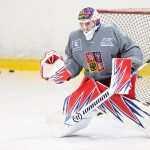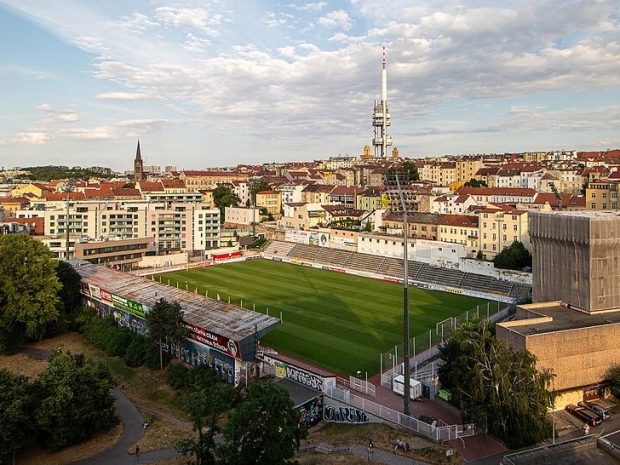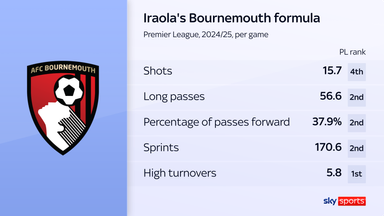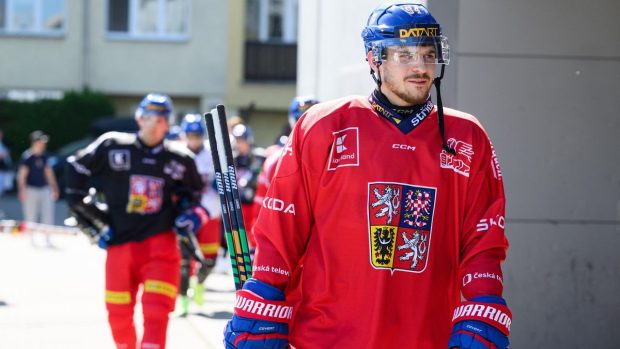On Wednesday night, the vaunted LeBron-Luka pairing bowed out in the first round in just five games to the sixth-seeded Minnesota Timberwolves. If you were underwhelmed by the Luka-LeBron Lakers, you’re not alone. Opponents felt the same way.
To drive home this point, here’s a startling fact: On the season — regular season and postseason combined — the Lakers were outscored with LeBron James and Luka Dončić on the floor. In the regular season, the Lakers were plus-24 with those two stars on the floor, scoring 1,399 points to the opponents’ 1,375. In the Minnesota series, they were minus-29.
Advertisement
The Lakers just couldn’t make Luka and LeBron work in Year 1.
From the outset of the trade, the formula was always to outscore the opponent, not outstop them. It got so bad that, in Game 4, Redick went small and played the entire half without utilizing a center, marking the first time in the play-by-play era beginning in 1998 that a coach failed to make a substitution in a half. And then, in Game 5, Rudy Gobert set a career-high in scoring. The explosive offensive firepower everyone expected just never showed up.
In their opening act as teammates, James and Dončić often operated in silos, watching the other go to work. It conjured up memories of Dwyane Wade and James in the early Big Three months in Miami.
Advertisement
The big difference is that the Miami trio had a training camp to figure some things out. But I don’t think the Lakers need a training camp.
They need an overhaul.
Luckily for president of basketball operations Rob Pelinka, he ran circles around his longtime friend Nico Harrison in the Dončić negotiation, holding on to valuable assets in Austin Reaves, Dalton Knecht and the Lakers’ coveted 2031 first-round pick. He was also able to undo another trade that would’ve sent Knecht, the 2031 first and a 2030 pick swap to Charlotte for center Mark Williams.
The Lakers can now go to market this summer and reroute the Williams package to another team or play with the 2032 first-round pick that can be traded after the 2025 draft night concludes. From a draft pick standpoint, at maximum, the Lakers can offer an unprotected 2031 first-round pick and four swaps (2026, 2028, 2030, 2032) or an unprotected 2032 first-round pick and four swaps (2026, 2028, 2030, 2031) in trades.
(Henry Russell/Yahoo Sports Illustration)
If the Lakers want to chase a max-level player, they may have to combine the mid-tier expiring contracts of Rui Hachimura ($18.2 million), Gabe Vincent ($11.5 million) and Maxi Kleber ($11 million) which will get them to about $40 million for salary-matching purposes. That’ll come in handy for cap-conscious teams looking to shed long-term salary amid the more onerous collective bargaining agreement. Another lever Pelinka could pull: put Reaves in a deal.
Advertisement
The top priority for the Lakers this offseason is finding a rim protector and vertical spacing threat to collapse the defense. You’re seeing the irony, right? The Mavericks mastered this blueprint by adding Dereck Lively II and Daniel Gafford next to Dončić en route to the NBA Finals before inexplicably kicking Dončić to the curb.
As good as Reaves filled the role of third banana, he’s more of a luxury than a necessity next to the offensively skewed James and Dončić. In order to get a third star that covers James’ and Dončić’s weaknesses on the defensive end, you’ll probably have to surrender Reaves, who represents one of the biggest bargains in the sport, making just $13.9 million in 2025-26 and holding a player option for just $14.9 million in 2026-27.
With all that in mind, and safely assuming that LeBron doesn’t want to hang it up, here are five trade targets to maximize the Luka-LeBron pairing:
Jarrett Allen, Cleveland Cavaliers
The proposal
Lakers receive: Jarrett Allen
Advertisement
Cavs receive: Austin Reaves, Dalton Knecht, unprotected 2031 first-rounder and pick swaps in 2026, 2028, 2030, 2032
Once Cleveland inked Evan Mobley to a max extension last July, the writing was on the wall for the Core Four. Mobley’s contract explodes from $11.2 million in 2024-25 to $38.7 million in 2025-26, the first of a massive five-year pact, pushing the Cavs’ payroll deeper into the 2025-26 tax than all but two teams (Boston and Phoenix). For a small market like Cleveland, something’s got to give and, unfortunately, Allen may be the odd man out.
For the Lakers, the appeal is obvious. Allen, a one-time All-Star squarely in his prime (he turned 27 last week), would immediately step in as an ideal low-usage lob threat and defensive anchor. Plus, he has four fully guaranteed years left on his contract, starting at $20 million in 2025-26.
For the Cavs, Mobley’s Defensive Player of the Year ascension makes an Allen trade easier to swallow, especially if it brings in Reaves, a dynamic wing who can boost the team’s playmaking and foul-drawing on the perimeter. The Cavs would shave money off their hefty tax bill and still flex a formidable starting five of Darius Garland, Donovan Mitchell, Reaves, De’Andre Hunter and Mobley. An early exit in the playoffs would make an Allen deal more plausible, but no less painful.
Jaren Jackson Jr., Memphis Grizzlies
The proposal
Lakers receive: Jaren Jackson Jr. and Brandon Clarke
Advertisement
Grizzlies receive: Austin Reaves, Rui Hachimura, Dalton Knecht, unprotected 2031 first-rounder and pick swaps in 2026, 2028, 2030, 2032
Will the Grizzlies fully smash the reset button after a disastrous finish to the season that included GM Zach Kleiman firing Taylor Jenkins right before the postseason and the team getting swept in the first round? We’ll see what happens this offseason with Ja Morant and Jackson.
The latter could have signed an extension before the season but decided against it, opting for the possibility he could make All-NBA this season and become eligible for a supermax extension bump. He has an expiring deal at a reasonable $25 million for 2025-26 after which the 25-year-old can become a free agent. Rather than risk letting the former Defensive Player of the Year walk for nothing, the Grizzlies could bring Reaves “home” to Memphis, just 100 miles away from the Newark, Arkansas, farm on which he was raised.
This season, Reaves joined Fred VanVleet as the only two undrafted players in NBA history to average 20 points and five assists on a winning team. Like Allen above, the Lakers would have to put all their chips in the middle. With Jackson’s uncertain future and Reaves’ local ties, this is certainly a situation to monitor.
Walker Kessler, Utah Jazz
The proposal
Lakers receive: Walker Kessler
Advertisement
Jazz receive: Dalton Knecht, unprotected 2032 first-rounder and pick swaps in 2026, 2028, 2030, 2031
This is the Mark Williams offer but with three more pick swaps and the first-round pick being one year later than the one Pelinka was willing to send to Charlotte. I’m not even sure Utah bites unless Reaves is part of the package, especially considering the Jazz may feel a certain way after unknowingly greasing the cap wheels for the Dončić trade in the first place. Kessler is set to earn less than $5 million next season, giving him one of the most team-friendly contracts in the league. Granted, he’s due for an extension this summer, so his discount has an expiration date on the horizon.
For the Jazz to trade the 23-year-old now, without seeing how he fits next to their incoming top-5 pick, they’d be justified to ask for a king’s ransom.
Yes, it’s hard to reconcile Kessler’s elite block rates with Utah owning two of the worst defensive ratings in NBA history with him as the defensive anchor. That said, I’d be willing to bet on Kessler in a winning environment and not whatever Utah has been trying to do the last two seasons. A larger deal involving Jordan Clarkson and Collin Sexton’s expiring contracts can be explored with Reaves, but I don’t see the Lakers throwing him into a deal unless it’s for a bankable star. Kessler isn’t that, but he’s also an upgrade over Mark Williams.
Wendell Carter Jr., Orlando Magic
The proposal
Lakers receive: Wendell Carter Jr.
Advertisement
Magic receive: Dalton Knecht, Shake Milton, unprotected 2031 first-rounder, pick swaps in 2028 and 2030
The Lakers and Magic seem like ideal trade partners. The defensively rich Magic desperately need an offensive injection (hello, Knecht!) and have the luxury of two springy centers that deserve a full-time starting role: Wendell Carter Jr. and Goga Bitadze.
Both would represent a significant upgrade over Jaxson Hayes, who struggled to gain the confidence of Redick this season. I much prefer Carter Jr.’s physicality compared to the Duke product that the Lakers almost acquired at the deadline, Mark Williams.
Playing without a true point guard for most of his career, Carter Jr. has some untapped Daniel Gafford lob potential. Last season, Carter Jr. flushed 19 alley-oop dunks with an average vertical of 27.6 inches, clearing Allen (27.3), Jackson (26.5) and Kessler (21.6) on this list. Put Carter Jr. next to LeBron and Luka and I think he’d thrive. An added bonus, he’s under contract for the next four seasons at a very moveable $17.4 million average annual salary.
Isaiah Stewart, Detroit Pistons
The proposal
Lakers receive: Stewart, Lindy Waters III
Advertisement
Pistons receive: Dalton Knecht, Gabe Vincent, Shake Milton and two pick swaps in 2026 and 2028
Beef Stew and LeBron James may have some, well, beef dating back to the 2021 tussle in which both were suspended, but if James wants an elite rim protector, it’ll be harder to find one better than Detroit’s 23-year-old center.
Stewart took a backseat to rising star Jalen Duren in 2024-25, but with a near 7-foot-5 wingspan, Stewart remains a monster in the paint. This past season, Stewart led all players in defensive field goal percentage at the rim, allowing just 46% shooting by the basket while nearby, according to NBA.com player-tracking data (min. over 200 shots defended).
Stewart may not be a star like the targets above, but he’s certainly a star in his role, owning the boards and ranking among the league leaders in block rate. Over the next three seasons, Stewart is set to make $15 million (team option in 2027-28), which would allow the Lakers some cap flexibility to build around their starry core. As for the Pistons, they acquire much-needed backcourt depth (Dennis Schröder, Tim Hardaway Jr., and Malik Beasley are all free agents) and one of the most promising young shooters in Knecht to flank Cade Cunningham. I could see the Pistons demanding a first-round pick if they were to part with Stewart, but Knecht’s upside as a sharpshooter could be enough.
This news was originally published on this post .









Be the first to leave a comment